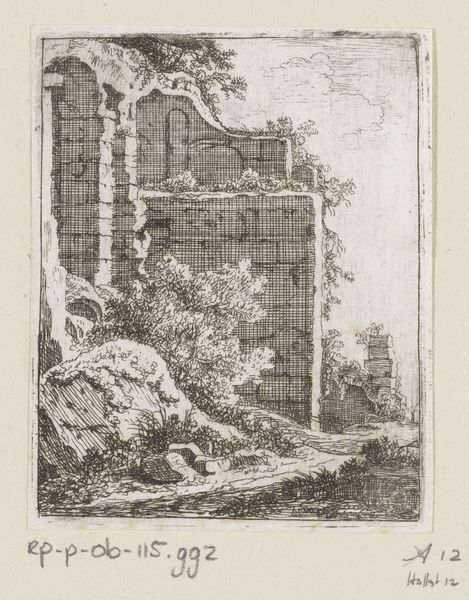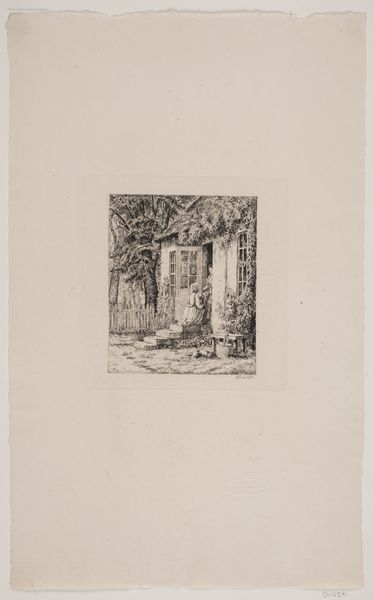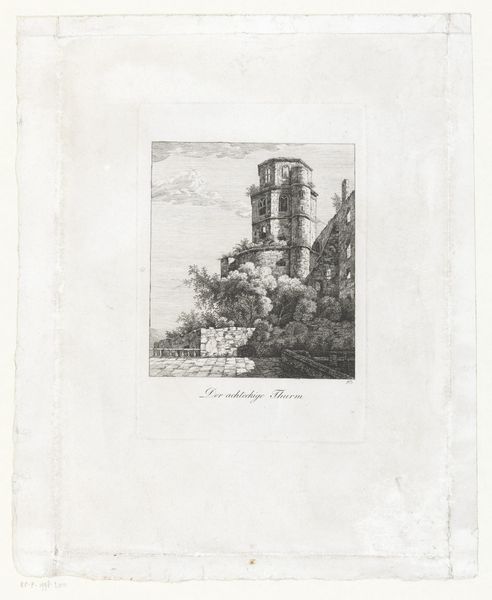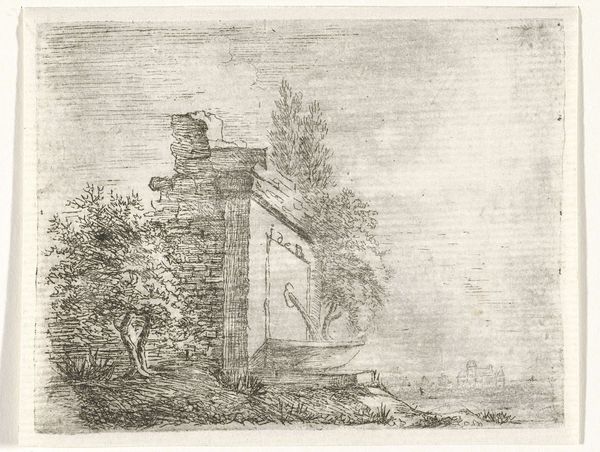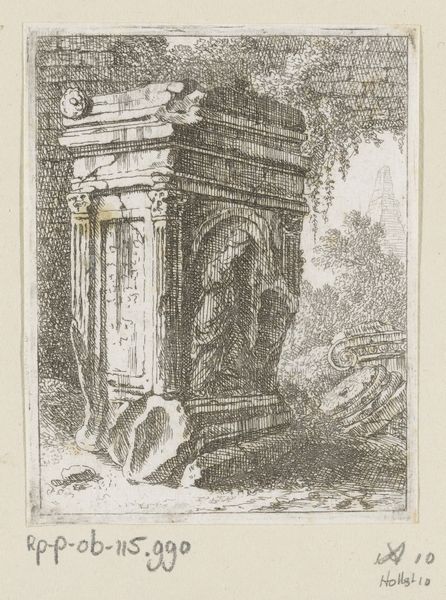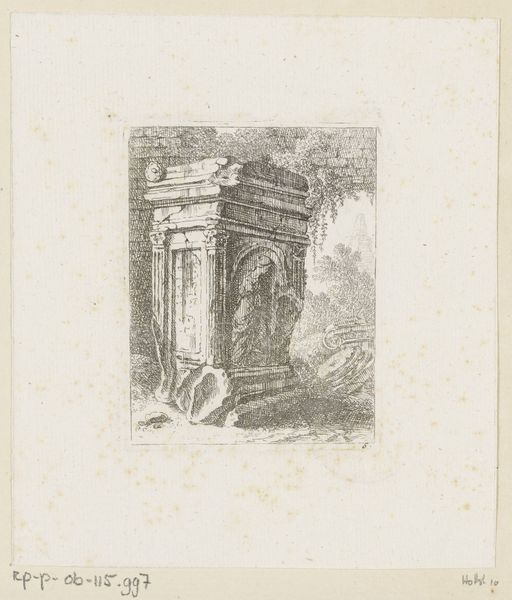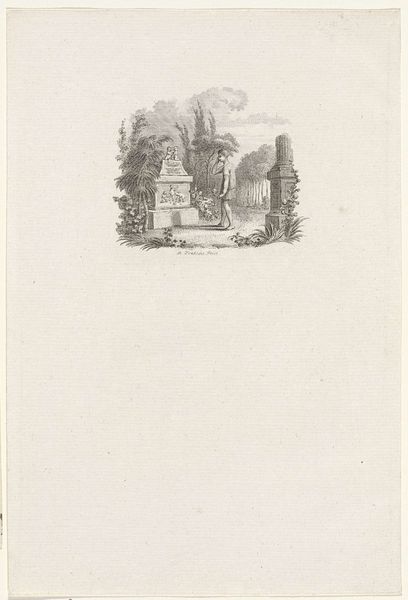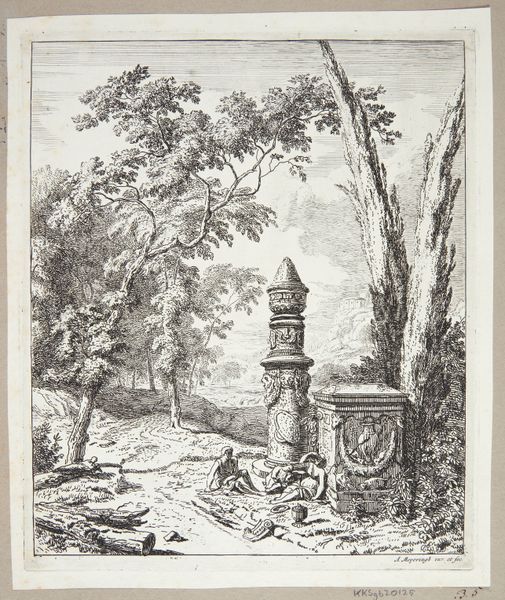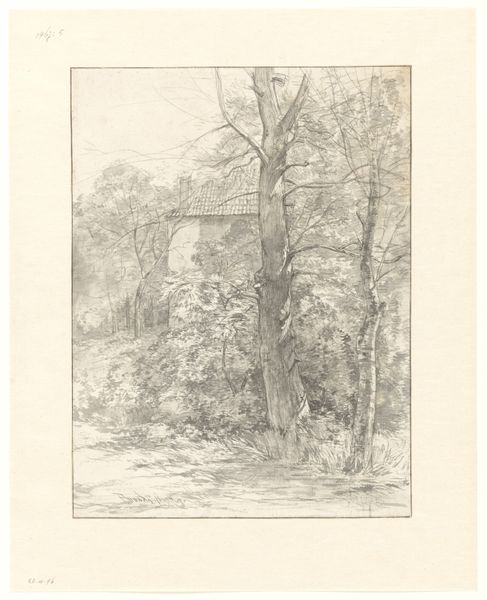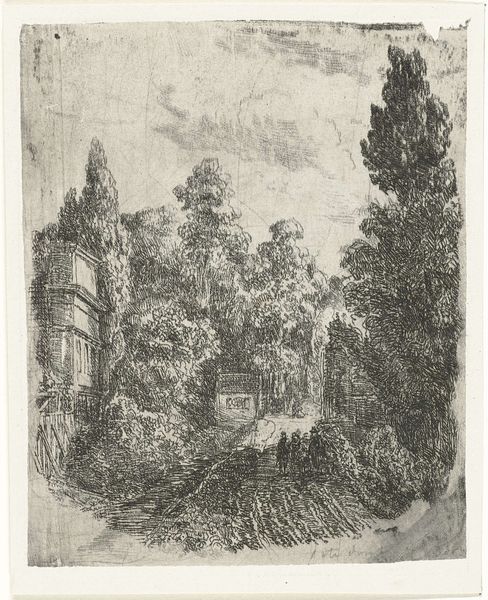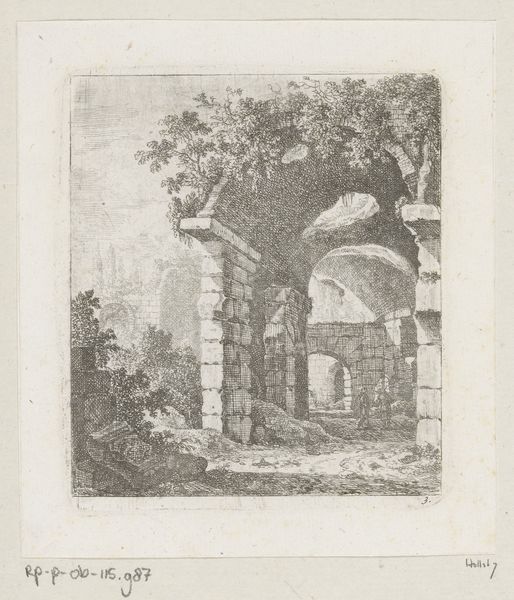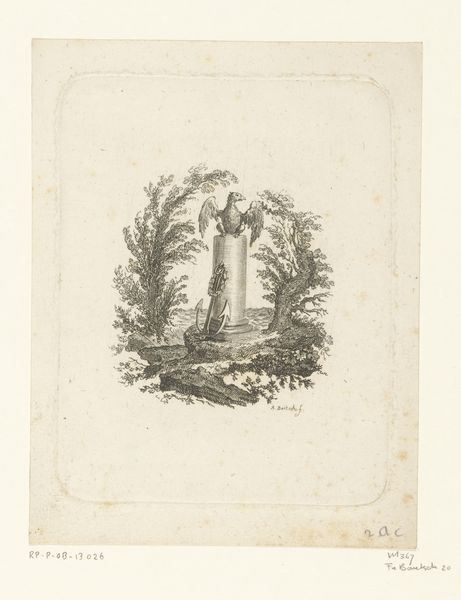
Dimensions: height 249 mm, width 196 mm
Copyright: Rijks Museum: Open Domain
Editor: This is "Waterput" by Louis Simon Lempereur, sometime between 1738 and 1807. It's an etching. I’m really drawn to the quiet stillness of the scene, but also the sense of decay. What do you see in this print? Curator: Immediately, I'm struck by how Lempereur uses the well as a focal point, almost an altar, in this seemingly simple landscape. Consider the water itself – life-giving, reflective, but here contained within aging stone. The well becomes a vessel for symbolic weight. Do you feel a sense of the sacred in the everyday? Editor: Sacred is a strong word! I was thinking more about the effects of time, like the plants overtaking the structure. Curator: Indeed. But what do these natural elements signify? The intertwining branches, the encroaching moss... they evoke ideas of nature reclaiming what was once ordered by humans, reminding us of the ephemerality of our creations and selves. Notice, also, how the artist has carefully composed the scene, creating depth and light through varied densities of line work. Editor: The line work really does give it an almost photographic feel despite being an etching. I wonder if viewers at the time saw it similarly? Curator: It's a fascinating point. Etchings like this were becoming more common, offering affordable images for a growing middle class. The romanticized landscape taps into a growing nostalgia, perhaps a visual balm in an era of great societal shift. These images carry that history and those anxieties with them. It presents the power of nature and the past merging together. Editor: I see that now – the scene feels so much more than just a water well! Thank you for pointing out all of those connections. Curator: It has been my pleasure, your insights regarding visual accuracy made me think further as well.
Comments
No comments
Be the first to comment and join the conversation on the ultimate creative platform.
